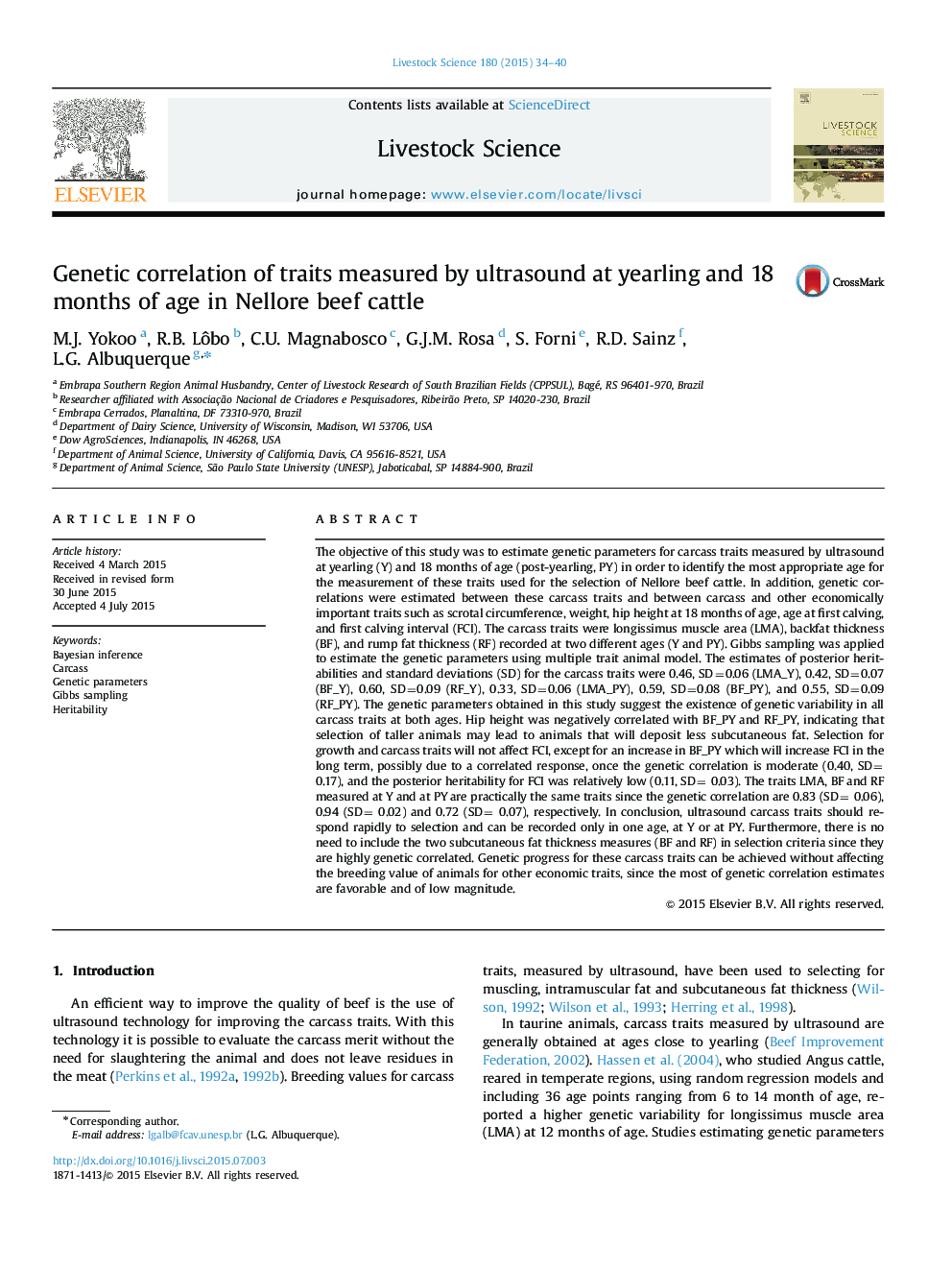| کد مقاله | کد نشریه | سال انتشار | مقاله انگلیسی | نسخه تمام متن |
|---|---|---|---|---|
| 2447019 | 1553952 | 2015 | 7 صفحه PDF | دانلود رایگان |
• Genetic parameters for reproductive and ultrasound carcass traits at two ages.
• Genetic progress in ultrasound carcass traits can be achieved in younger age.
• There is no need to select two subcutaneous fat thickness measures in Nellore.
The objective of this study was to estimate genetic parameters for carcass traits measured by ultrasound at yearling (Y) and 18 months of age (post-yearling, PY) in order to identify the most appropriate age for the measurement of these traits used for the selection of Nellore beef cattle. In addition, genetic correlations were estimated between these carcass traits and between carcass and other economically important traits such as scrotal circumference, weight, hip height at 18 months of age, age at first calving, and first calving interval (FCI). The carcass traits were longissimus muscle area (LMA), backfat thickness (BF), and rump fat thickness (RF) recorded at two different ages (Y and PY). Gibbs sampling was applied to estimate the genetic parameters using multiple trait animal model. The estimates of posterior heritabilities and standard deviations (SD) for the carcass traits were 0.46, SD=0.06 (LMA_Y), 0.42, SD=0.07 (BF_Y), 0.60, SD=0.09 (RF_Y), 0.33, SD=0.06 (LMA_PY), 0.59, SD=0.08 (BF_PY), and 0.55, SD=0.09 (RF_PY). The genetic parameters obtained in this study suggest the existence of genetic variability in all carcass traits at both ages. Hip height was negatively correlated with BF_PY and RF_PY, indicating that selection of taller animals may lead to animals that will deposit less subcutaneous fat. Selection for growth and carcass traits will not affect FCI, except for an increase in BF_PY which will increase FCI in the long term, possibly due to a correlated response, once the genetic correlation is moderate (0.40, SD= 0.17), and the posterior heritability for FCI was relatively low (0.11, SD= 0.03). The traits LMA, BF and RF measured at Y and at PY are practically the same traits since the genetic correlation are 0.83 (SD= 0.06), 0.94 (SD= 0.02) and 0.72 (SD= 0.07), respectively. In conclusion, ultrasound carcass traits should respond rapidly to selection and can be recorded only in one age, at Y or at PY. Furthermore, there is no need to include the two subcutaneous fat thickness measures (BF and RF) in selection criteria since they are highly genetic correlated. Genetic progress for these carcass traits can be achieved without affecting the breeding value of animals for other economic traits, since the most of genetic correlation estimates are favorable and of low magnitude.
Journal: Livestock Science - Volume 180, October 2015, Pages 34–40
